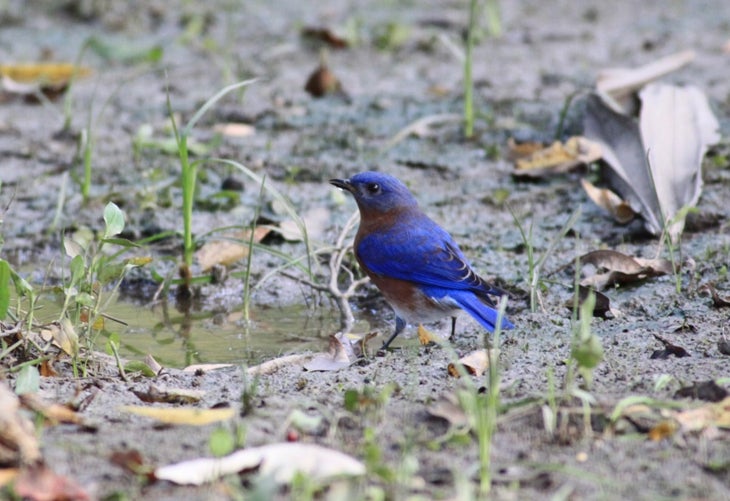In most large cities, birding means spotting an old thunderbird while idling in traffic. In Houston, however, aspiring ornithologists are flocking for the opportunity to view the surprising abundance of feathered urbanites. This fall, longtime Glasscock School instructor Glenn Olsen will help participants navigate the paved paths in our “Urban Birding” course, which will include a guided field trip with the instructor.
Olsen’s bio is impressive, listing membership in the American Birding Association, the American Bird Conservancy and the Houston Audubon Society, to name a few. With the Audubon, he served as the vice president of education and as an instructor for birding classes, and in another capacity worked with the Nature Conservancy on a special project with captive-reared endangered Attwater’s Prairie-Chickens, adding yet another feather in his cap. Not only is Olsen knowledgeable, but incredibly entertaining in the classroom with impressive bird calls and helpful tips to identify birds in the field, or in the streets of downtown.

To gain a better idea of Houston’s birding scene, Olsen provides responses to the following questions.
Is it true that we have falcons or hawks living in the downtown area?
We are very fortunate to have between two and four Peregrine Falcons stopover during their migration. They do not live here year-round, but it is possible to see one or more from around November through April. They pass in and out of the Houston area. They may be downtown or at one of the other locations for a few days or a few weeks. Two have been frequent visitors to downtown, and one usually hangs around Waugh Street and Allen Parkway on the tall buildings (I think it is an American General Office) and one is seen periodically in the Medical Center. It is possible that there are only two that move around to the various locations, or it could be three or four birds. We know for certain that there are two downtown as they have frequently been seen together.
How does urban birding in Houston compare to that of other cities?
Because of our location in the flyway for migration and because we have a fair number of parks we are well positioned to enjoy urban birding. A few other major cities compare favorably with Houston, like San Francisco and Central Park in New York. What is the most exciting birding experience you have had in Houston? Inside loop 610, I would say seeing the Peregrine Falcons in downtown. However, warbler and songbird migration at Houston Audubon's Edith Moore Sanctuary, the wintering ducks in Hermann Park and Merlins in Bear Creek Park are also exciting experiences.

How does our proximity to the coast and our bayou waterways influence Houston birding?
Our bayous are undervalued and underappreciated waterways, wildlife habitats and corridors! Without them we would not have nearly as many birds in the urban environment. Some of the bayous provide woodland habitat for flycatchers and songbirds. Others provide food and habitat for egrets, herons, ducks and other wildlife. What are some of your favorite bird calls and songs? I have several favorite bird calls and songs. Here are a few. Perhaps the most musical ones are in the Thrush and Mimidae Families, like Wood Thrush, Veery, Brown Thrasher and Mockingbird. Others that are cool sounding are Sandhill Crane, American Bittern and Eastern Screech Owl. There are many others.

